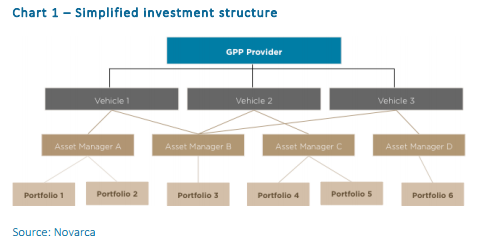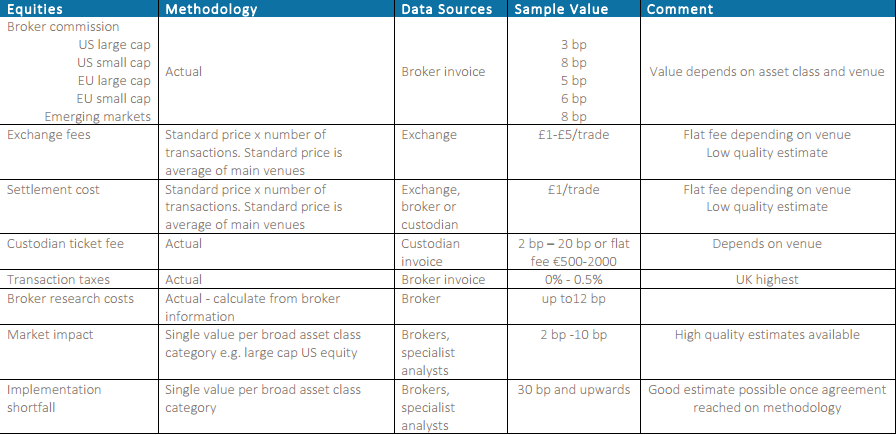From the blog: Debate about the disclosure of transaction charges has made waves across the pensions industry this year. Will the autumn bring a fresh set of challenges and paperwork for trustees and independent governance committees? Or is it possible to draw answers from information already out there?
Value for money was brought sharply into focus back in March with the introduction of a hard 0.75 per cent management charge cap for auto-enrolment default funds to safeguard consumers against high and unfair charges.
The Office of Fair Trading's damning 2013 report into the defined contribution workplace pension market highlighted several shortcomings in the sector, including high charges and a misalignment of interests between members and employers.
The rise of DC pension arrangements among UK employers is ramping up the pressure on the industry to deliver a fair and adequate system to safeguard future benefits, giving rise to increased scrutiny on value, costs, charges and transparency.
The first phase of the Department for Work and Pensions' crackdown on transparency has already been implemented with the April 2015 introduction of new annual reporting requirements for trustees and independent governance committees in contract-based schemes.
However, further work remains to enhance transparency around transaction costs and administration charges. In March the DWP and the Financial Conduct Authority launched a joint call for evidence to explore how these costs can be identified and presented for both trustees and members in a further attempt to improve value for money for savers.
Transaction charge disclosure opens a whole can of worms for the pensions and investment management industry.
In a report published by LCP in March, 40 of the 80 asset managers polled by the consultancy either refused or claimed they were unable to disclose information on the level of transaction costs they charge investors, including expenses such as commissions and stamp duty.
Managers that did not provide information on transaction costs cited reasons including an inability to split the information into cost of dealing commissions and taxes or that they did not make that information publicly available.
Transaction costs are defined in DWP draft regulations and FCA-published rules as the “costs and charges incurred as a result of buying, selling lending or borrowing of investments”.
Members’ savings undergo myriad transactions through the course of investment processes during accumulation.
The recording, analysis and presentation of costs at every tiny juncture along the investment pathway may neither be possible nor practical but it is important for the industry to make a start on tracking down costs.

At the end of last year cost analysis specialist Novarca produced a report for the FCA which aimed to:
identify transaction-related costs existing within group personal pension products;
determine which costs are relevant to assessing value for money;
recommend a practical method for assessing these costs;
propose standards for disclosing cost information to enable value-for-money assessments.
Emmy Labovitch, director at Novarca, says a lot of progress can be made in enhancing cost transparency by using information already out there more effectively.
“It doesn’t have to be perfect, you can get a long way doing a rough-and-ready calculation,” she says. “Over time as people introduce new systems and focus more on this you can make the data more accurate.”
Labovitch says just comparing two or three different equity managers would be a useful starting point.
"The trouble is no one asks the question. Asset managers will tell you, we don’t have this information... It may be... they don’t systematically collate it but it's just a question of getting it passed to the client," she says.
Labovitch adds that pension funds can still make the biggest savings on manager costs rather than transaction costs.
Cost probe
Novarca probed which costs should be made transparent and at how this could be achieved. The report identifies more than 40 transaction-related costs that may be incurred by a GPP scheme, concluding that just eight cost-categories provide information sufficient to enhance IGCs' insight into costs.

Source: Novarca
Novarca established three basic criteria against which to test identified costs in order to assess the extent to which they impact value:
Can the cost be measured accurately? Can it be directly observed or estimated?
Is the cost material? Does it have material impact on returns for consumer?
Can the cost be controlled or reduced?
Equipped with evidence from across the industry the DWP and FCA must now be working towards a framework for implementation. While it may be far from perfect the process must start somewhere.














